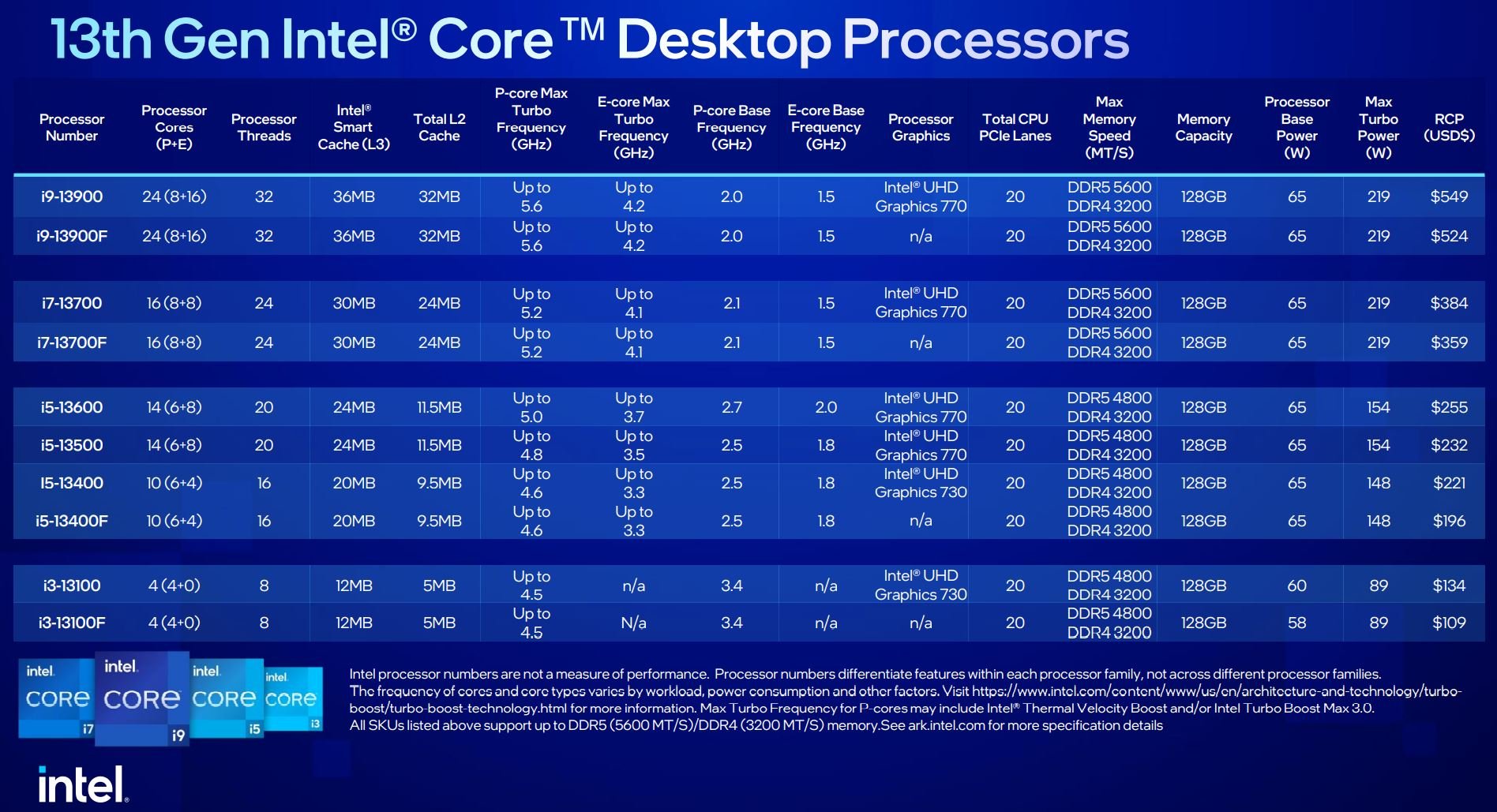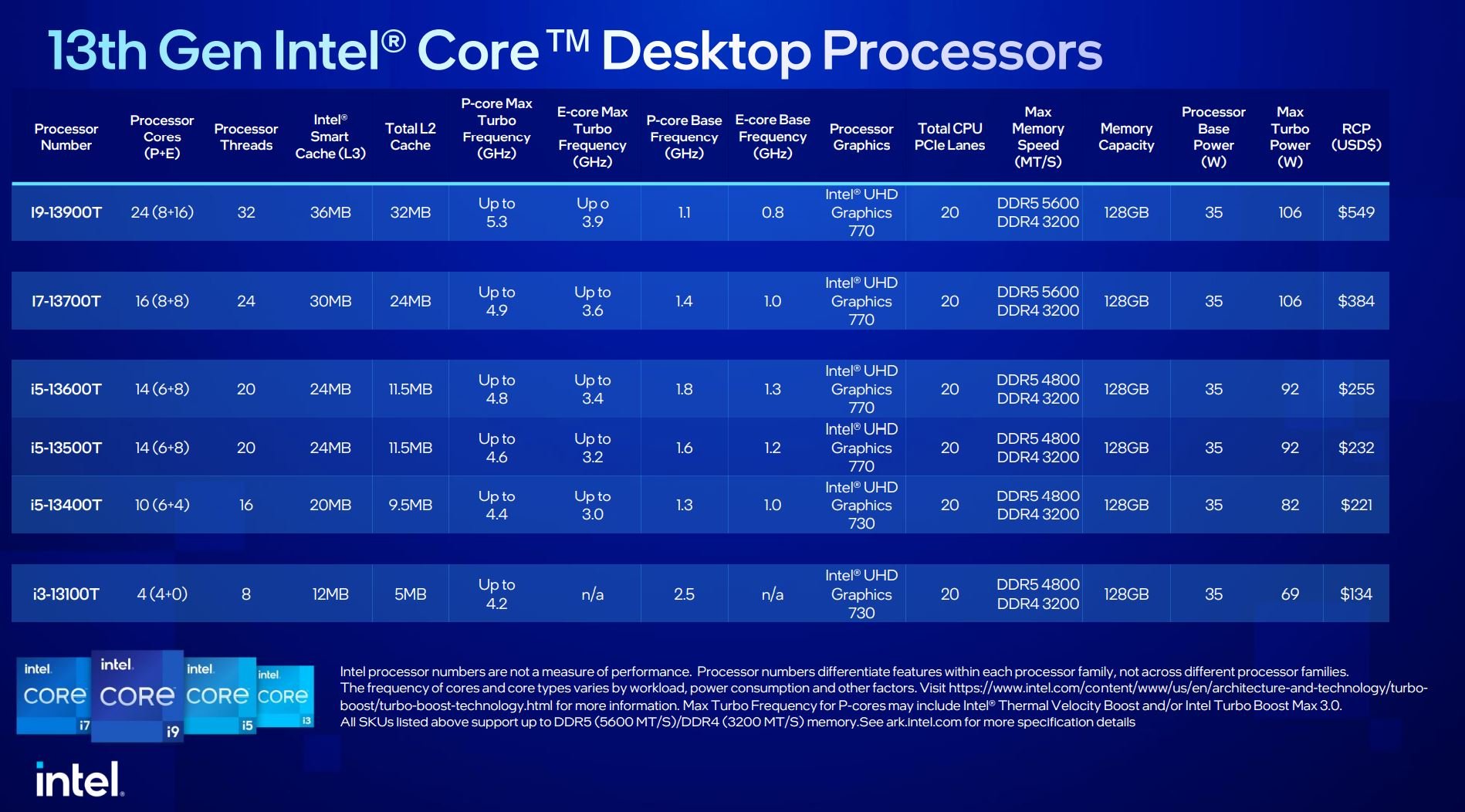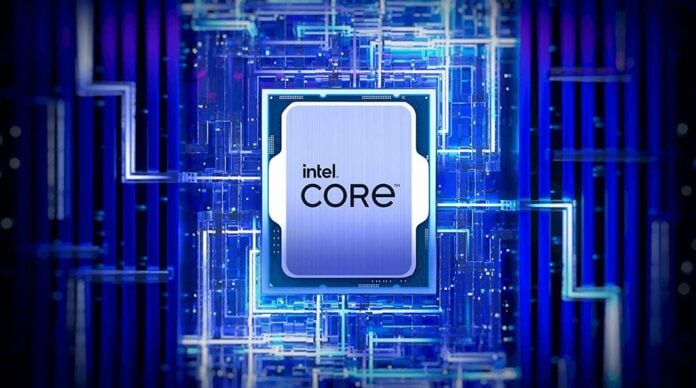Intel successfully launched 13th Gen Core Raptor Lake desktop CPUs late last year. Built for performance first and foremost, six models – three K and three non-IGP KF – each have 125W base TDPs escalating right up to 253W for range-topping Core i9-13900K. Understanding the broader market requires far more SKUs with lower base wattages, today the chip giant unleashes 10 medium-wattage models and a further six 35W. Let’s get to them.

Starting at the top, Intel restrains base TDPs for the Core i9 duo to 65W, though with a Maximum Turbo Power of 219W, users need to be careful in how the chips are configured in motherboard BIOSes. Outside of that, the pair is familiar enough, carrying 24 cores and 32 threads, albeit at lower speeds than we’re used to. Recommended pricing is marginally lower than K-series parts, which makes us wonder why prospective buyers would stump up the cash for these when proper K-series models can easily be set to 65W in modern boards.
Dropping down to Core i7 reveals more of the same. Hewn from Raptor Lake technology, the 16-core, 24-thread models ought to benchmark well, going by how Core i7-13700K fared. That chip stretch frequency legs by having 125W/253W power limits, and priced at $409, the same commentary applies to 65W base models – insofar as their appeal is diminished due to the flexibility of K-series processors.
13th Gen Core i5 65W outfitted with (mostly) Alder Lake technology
Matters are more interesting for 65W Core i5s. The first two, 13600 and 13500, follow the Raptor Lake playbook by being armed with 6 Performance and 8 Efficient cores for a total thread count of 20. But that’s where similarity ends. Notice maximum supported memory speed drops from 5,600MT/s to 4,800MT/s, while total L2 cache tops out at 11.5MB instead of, say, 20MB on 13600K. Such information ought to provide suitable inkling into how they’re built. Put simply, these 13th Gen CPUs, and all below them, use the Alder Lake architecture instead of more performant Raptor Lake. Cores and threads are massaged to hit certain specifications deemed worthy of 13th Gen Core i5.
Nevertheless, oddities remain. Core i5-13400 carries four fewer Efficient cores than i5-13500 yet costs only $11 less and clocks in lower. That makes little sense to the PC builder looking for a mid-range system, as they’d favour 13500 every time. Rumours suggest that 13400 may be the only SKU based on both Raptor Lake and Alder Lake architectures, hence the higher price, but how will enthusiasts know which they’re getting? All very murky indeed.
These new processors make a lot of sense at the Core i3 level. If you remember, Club386 loved the last-generation Core i3-1200F, calling it a ‘right little belter’ at around the £100 mark. Core i3-13100F carries on the good work by increasing top-end frequency by a nudge. Making most sense in the sub-£200 market, restrained-wattage 13th Gen Core chips are most welcome.
Don’t ignore 35W models, either

Intel has a rich history of introducing 35W models a few months after the launch of high-performance chips. That’s the case this time around, too, as six models take an axe to TDPs. Firm choices for HTPC and near-silent PCs, the processors can even be cooled passively by large heatsinks.
Following the strategy adopted by 12th Gen Core Alder Lake between late 2021 and early 2022, 13th Gen Core now has a massive 22 processors to choose from. Which is your favourite? Ours remains Core i5-13600K.

